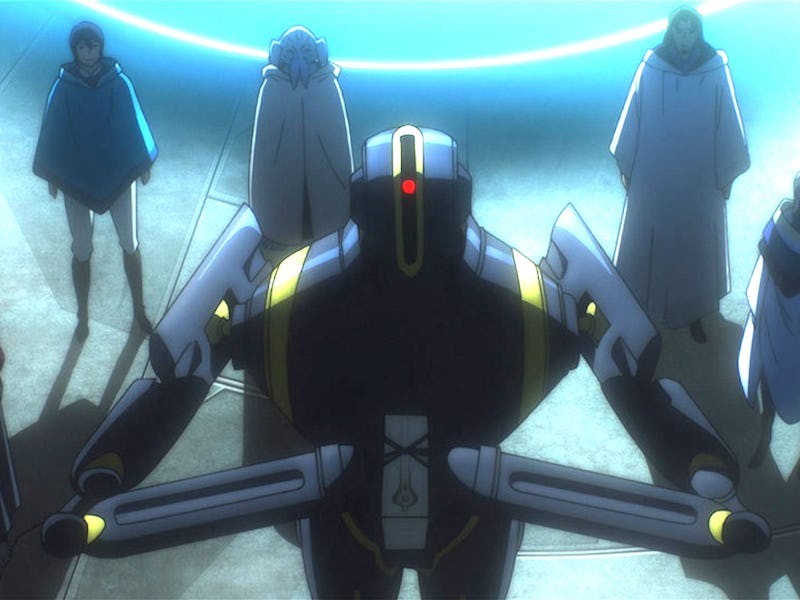How Star Wars: Visions creates a multiverse by ditching canon
Maybe there’s more than one Star Wars galaxy?

There used to be just one Star Wars galaxy, but thanks to the bold anime anthology series Star Wars: Visions, that galaxy is expanding in some big ways.
For canon-obsessed Star War diehards, the biggest question is: how do all these disparate tales fit into the larger faraway galaxy? And the short answer is: they might not.
Thanks to Visions, the range of Star Wars might extend to other galaxies and a spider-webbed multiverse. Here’s how Visions presents a visual multiverse by pushing Star Wars canon into the trash compactor. Warning! Mild spoilers ahead for Star Wars: Visions.
A galaxy far, far away
“The Duel.”
There’s a great line in the Star Wars: Visions episode “The Twins” in which Karre says he’s going to go to a “galaxy far, far away.” Obviously, any galaxy outside of the Star Wars galaxy would seem far, far away to them, but that notion of relative distance in space is a good metaphor for thinking about Visions as a whole.
In every single Visions story, the Jedi, the Force, and lightsabers exist. Sometimes, like in “The Elder,” it seems as though we’re inhabiting a pre-Phantom Menace timeline in which Jedi masters and padawans routinely patrolled the galaxy. In other stories, like “The Duel,’ the Empire has recently fallen and Mandalorian-era lawlessness pervades the galaxy. In “Lop & Ocho,” we seem to be right in the Rogue One era, perhaps running parallel to the events of Rebels. And then, there’s the staggering “Ninth Jedi,” which could take place thousands of years after The Rise of Skywalker in a bewildering future where at least one heroic Jedi — the Margrave — takes his fashion cues from Darth Vader.
But does it actually matter if these stories fit neatly into the Star Wars timeline? Within the battleground of headcanon, you could shove each of these stories somewhere into the existing timeline. And if you push hard enough, you could probably make sense of most of them. “Tatooine Rhapsody” is fairly easy to reconcile chronologically, but what to make of Jay, the former Jedi, turned rock star? Did he remain a Force-powered rock god throughout the Galactic Civil War? What about Lop and her unique family lightsaber? Could she have assisted Luke and the gang at some point? Did Ahsoka know Lop? Could any of the Visions characters appear in The Mandalorian? Perhaps these are the wrong questions.
Star Wars: Visions vs. Star Wars canon
“Lop & Ocho.”
“Are they Canon?” Star Wars: Visions executive producer James Waugh tells Inverse in a recent interview, repeating back the question on the minds of many fans.
“That's not what Visions was really set out to do,” he explains. “Do I think I could see some of the technology or some of the characters, traversing media becoming live-action? You never know! That's the beauty of Star Wars. You get to see all sorts of cool stuff, kind of as different creators that come in, that we really want to empower creative visionaries to tell their stories.”
Waught has an excellent point. The various anime studios involved in Visions weren’t limited to canon, but the series could create huge shifts in the Star Wars status quo if just a few strands of Visions do wind up in the live-action films or TV. In other words, although Visions might operate outside of traditional canon, each episode, just by itself, has the power to entirely redefine the entire Star Wars timeline.
Take “TO-B1,” for example. Leaving aside the staggering implications that a droid can become a Jedi, it also seems like Professor Mitaka is straight-up terraforming Tatooine. And even if that’s not supposed to be Tatooine, the idea of terraforming one of these famous single-biome Star Wars planets is fairly huge. Again, this detail is simply backgrounded in a single episode of Visions, but if you’re trying to play the canon game, even that small piece makes a lot of dominos fall. Because if Force-wielding droids can now terraform entire planets, not only will you believe Hoth could melt, but, more interestingly, that Star Wars encompasses a wider range of science fiction and fantasy stories than it ever has before.
The Star Wars multiverse
Jabba the Hutt — but in which universe?
From the nitty-gritty fan theorizing side of the Force, this means that you can imagine “The Twins” taking place in an alternate universe in which the Empire and Republic progressed very differently than in the timeline we know. Or that perhaps Ronin in “The Duel” represents a new kind of divergence between Dark side and Light with his red lightsaber and heart of gold. Or maybe even the Margrave and Kara in “The Ninth Jedi,” don’t exist in the future of Star Wars, but instead, an entirely different reality where the rules of Kyber crystals and lightsaber creation are wildly different than in the rest of Star Wars.
Then again, maybe Star Wars: Visions doesn't need a multiverse to succeed. When you consider Star Wars as a piece of art (and not a series of Wookiepedia pages) the whys of Visions matter a lot less. Each of these nine stories has already given new hope and perspective to what this beloved world could be. Yoda told us the future is always in motion. What Visions proves is that movement can come from all sides.
Stas Wars: Visions is streaming on Disney+.
This article was originally published on